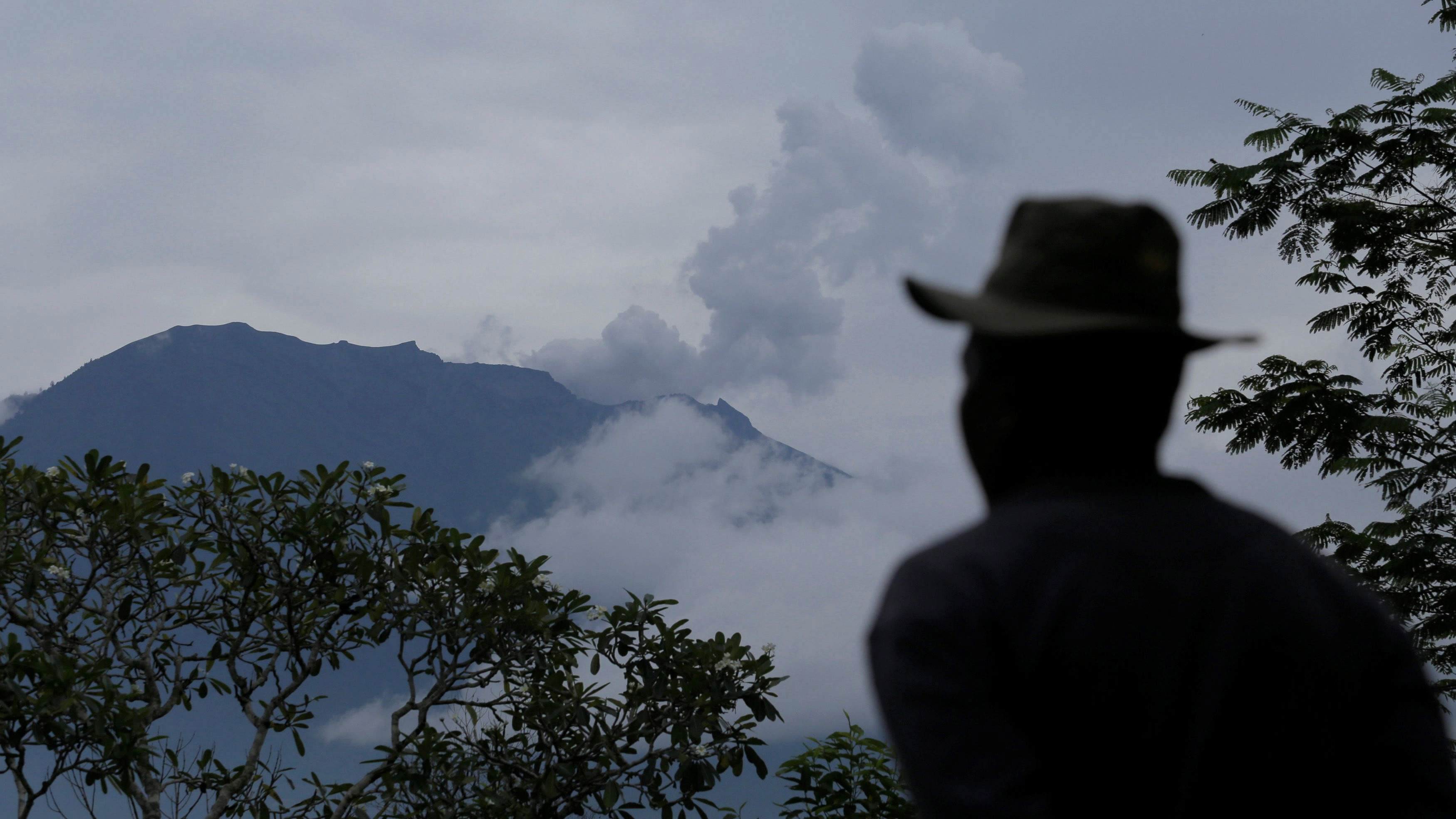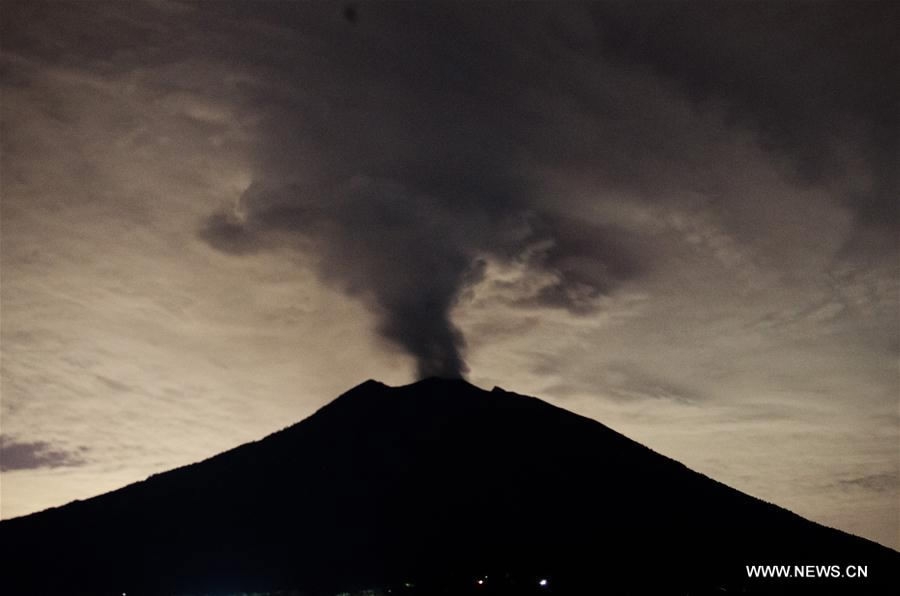
World
17:30, 22-Nov-2017
Mt. Agung volcano finally erupts
Alok Gupta

The rumbling Mt Agung volcano, which is around 75 km from scenic Bali, Indonesia, has erupted after 54 years, forcing thousands of villagers to move to safer places for the second time.
On Tuesday evening, the volcano started spewing a thick gray column of steam and smoke up as high as 700 meters above its summit with occasional tremors, Magma Indonesia reported.
The Volcano Observatory Notice for Aviation (VONA) has raised the second highest orange code, cautioning the aviation industry that eruption is underway, but with no or minor ash emission.
Airline operators have announced that there is no immediate threat to the flights to Bali as the eruptions are low; Bali’s Ngurah Rai International Airport is also operating normally.
The volcanic activity is casting doubt among tourists planning to travel to Bali during Christmas holidays. Mt. Agung began getting active in late September, causing confusion among Chinese Golden Week tourists.
According to the Bali Travel Promotion Agency, around 3.22 million tourists landed in Bali in 2014. Tourists from Australia constitute the highest 25 percent of the tourism pie while Chinese are second biggest with 12 percent.
The Indonesian government estimated a loss of 100 million US dollars after warnings regarding the possibility of volcano getting active caused safety concerns among tourists traveling to Bali.

Mount Agung volcano spews ashes in Bali resort island of Indonesia on Nov. 21, 2017. Mount Agung volcano in Bali resort island of Indonesia erupted on Tuesday, spewing a column of ashes up to the sky, a disaster agency official said. /Xinhua/Muhammad Fauzy Chaniago
Mount Agung volcano spews ashes in Bali resort island of Indonesia on Nov. 21, 2017. Mount Agung volcano in Bali resort island of Indonesia erupted on Tuesday, spewing a column of ashes up to the sky, a disaster agency official said. /Xinhua/Muhammad Fauzy Chaniago
Second wave of evacuation
The eruption in September forced Indonesian authorities to launch an evacuation of more than 140,000 villagers residing within the 1 km radius of the volcano. Evacuees returning to their villages after the eruption were delayed by weeks.
The new wave of evacuations started on Tuesday night after plumes of smokes and tremors started at 5 p.m. Indonesian time. Authorities have shifted 29,245 people to 278 shelters.
According to Indonesia’s disaster management agency, Mt. Agung produces phreatic eruptions that are difficult to predict. “It can happen suddenly and there is often no sign of increased seismicity,” Sutopo Purwo Nugroho spokesperson of the agency said.
Indonesia houses 127 active volcanoes and is situated on the Pacific Ring where tectonic plates frequently collide.
Mt. Agung reported two major eruptions in 1963 which killed more than 1100 people. The first eruptions continued for a month from February to March, and the second wave happened in May.
The eruptions in 1963 had a significant impact on the climate, with vast amounts of aerosols injected into the higher atmosphere. The aerosols brought down the global temperature by 1 to 4 degrees Celsius.

SITEMAP
Copyright © 2018 CGTN. Beijing ICP prepared NO.16065310-3
Copyright © 2018 CGTN. Beijing ICP prepared NO.16065310-3